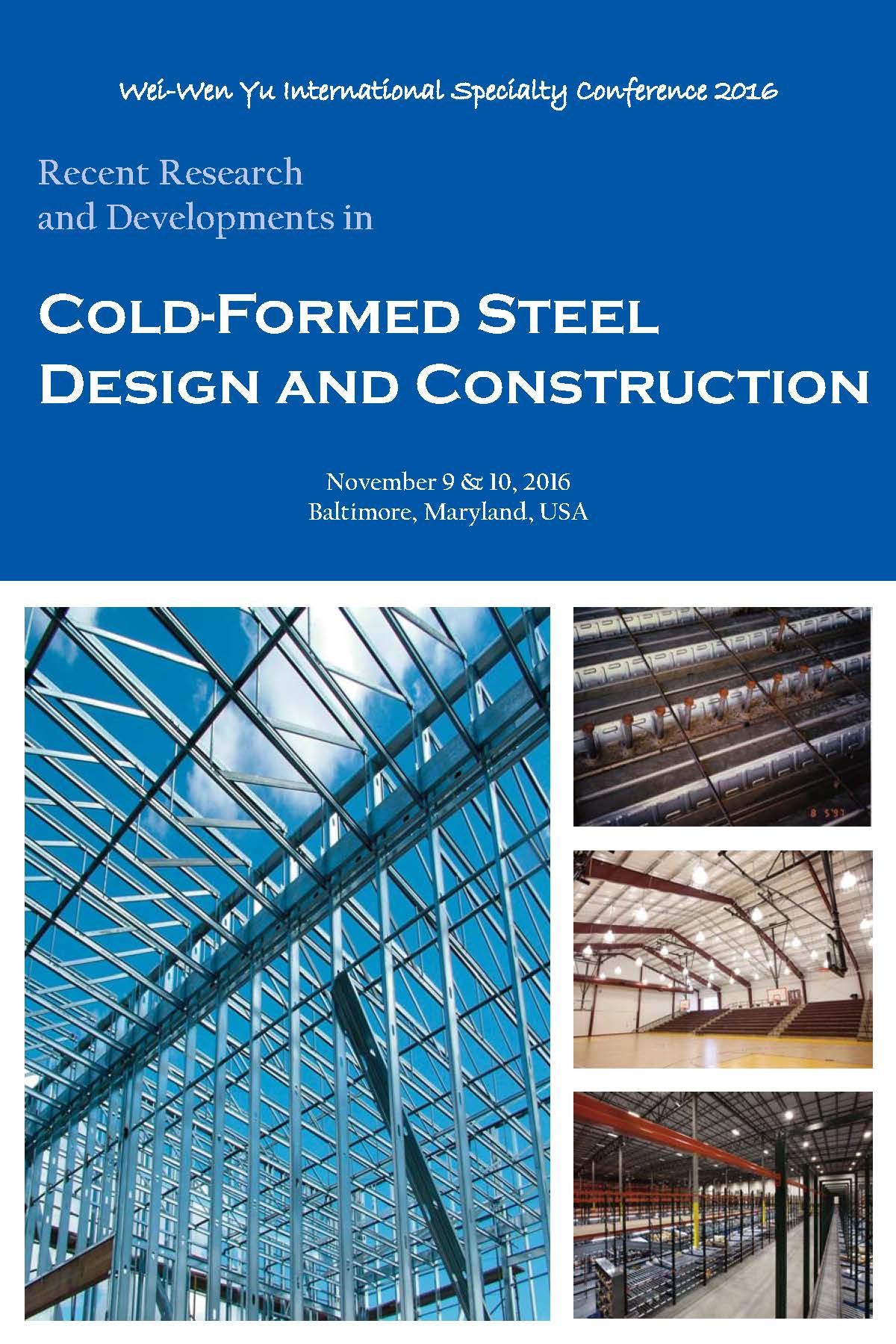Session Dates
10 Nov 2016
Abstract
The objective of this paper is to provide progress on development and validation of reduced order models for the in plane strength and stiffness of profiled steel panels appropriate for use in structural models of an entire building. Profiled steel panels, i.e, metal deck, often serve as a key distribution element in building lateral force resisting systems. Acting largely as an in-plane shear diaphragm, metal deck as employed in walls, roofs, and floors plays a key role in creating and driving three-dimensional building response. As structural modeling evolves from two-dimensional frameworks to fully three-dimensional buildings, accurate and computationally efficient models of profiled steel panels are needed. Three-dimensional building response is increasingly required by ever-evolving structural standards, particularly in seismic design, and structural efficiency demands that the benefits of three-dimensional response be leveraged in design. Equivalent orthotropic plate models provide a potential reduced order model for profiled steel panels that is investigated in this paper. A recent proposal for the rigidities in such a model are assessed against shell finite element models of profiled steel panels. In addition, the impact of discrete connections and discrete panels, as occurs in an actual roof system, are assessed when applying these reduced order models. Extension of equivalent orthotropic plate models to elastic buckling and strength, in addition to stiffness, both represent work in progress, but initial results are provided. Examples show that equivalent orthotropic plate models must be used with care to yield useful results. This effort is an initial step in developing efficient whole building models that accurately incorporate the behavior of profiled steel panels as diaphragms.
Department(s)
Civil, Architectural and Environmental Engineering
Research Center/Lab(s)
Wei-Wen Yu Center for Cold-Formed Steel Structures
Meeting Name
International Specialty Conference on Cold-Formed Steel Structures 2016
Publisher
Missouri University of Science and Technology
Document Version
Final Version
Rights
© 2016 Missouri University of Science and Technology, All rights reserved.
Document Type
Article - Conference proceedings
File Type
text
Language
English
Recommended Citation
Bian, G.; Torabian, S.; and Schafer, B. W., "Reduced Order Models for Profiled Steel Diaphragm Panels" (2016). CCFSS Proceedings of International Specialty Conference on Cold-Formed Steel Structures (1971 - 2018). 3.
https://scholarsmine.mst.edu/isccss/23iccfss/session7/3
Reduced Order Models for Profiled Steel Diaphragm Panels
The objective of this paper is to provide progress on development and validation of reduced order models for the in plane strength and stiffness of profiled steel panels appropriate for use in structural models of an entire building. Profiled steel panels, i.e, metal deck, often serve as a key distribution element in building lateral force resisting systems. Acting largely as an in-plane shear diaphragm, metal deck as employed in walls, roofs, and floors plays a key role in creating and driving three-dimensional building response. As structural modeling evolves from two-dimensional frameworks to fully three-dimensional buildings, accurate and computationally efficient models of profiled steel panels are needed. Three-dimensional building response is increasingly required by ever-evolving structural standards, particularly in seismic design, and structural efficiency demands that the benefits of three-dimensional response be leveraged in design. Equivalent orthotropic plate models provide a potential reduced order model for profiled steel panels that is investigated in this paper. A recent proposal for the rigidities in such a model are assessed against shell finite element models of profiled steel panels. In addition, the impact of discrete connections and discrete panels, as occurs in an actual roof system, are assessed when applying these reduced order models. Extension of equivalent orthotropic plate models to elastic buckling and strength, in addition to stiffness, both represent work in progress, but initial results are provided. Examples show that equivalent orthotropic plate models must be used with care to yield useful results. This effort is an initial step in developing efficient whole building models that accurately incorporate the behavior of profiled steel panels as diaphragms.



